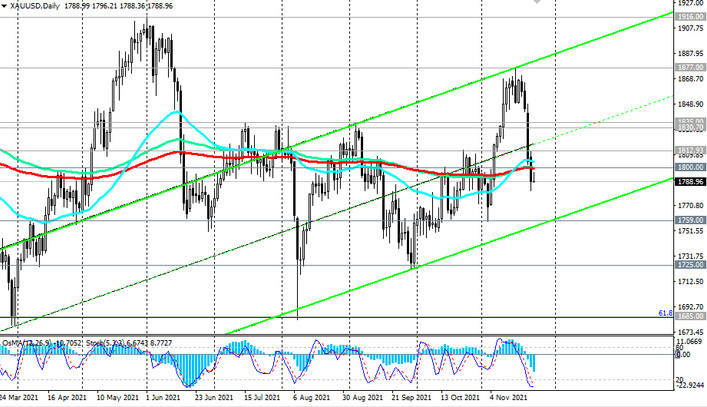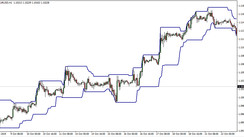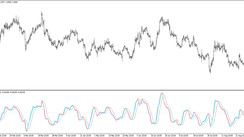The strengthening of the dollar is gaining momentum. At the beginning of the week, its buyers were encouraged by the re-election of Jerome Powell to a second term as chairman of the Federal Reserve System, which strengthened the expectations of the markets for a rise in interest rates next year, and today market participants are waiting for a new portion of positive, as expected, macro statistics from the United States, which could give the dollar a new upward impetus.
Among the block of important macro statistics, the publication of which is scheduled for 13:30 and 15:00 (GMT), is the latest weekly statistics from the US labor market. According to a previous report from the US Department of Labor, the number of initial applications for unemployment benefits fell to 268 thousand compared to 269 thousand a week earlier, which is in line with pre-crisis levels (previous weekly reports also came out with a constant improvement in the indicator: 271 thousand, 283 thousand, 291 thousand, 296 thousand 329 thousand, etc.). In the week before November 19, another decline in this indicator is expected (to 260 thousand), which will be another evidence of the ongoing recovery of the American labor market, and this is a positive factor for the dollar.
Among other data released today for the United States is an updated estimate of the country's annual GDP for the 3rd quarter. This data is one of the key (along with data on the labor market and inflation) for the Fed in terms of its monetary policy. In the previous 2nd quarter, GDP grew by +6.7% after growing by +6.4% in the 1st quarter of 2021. The data suggests that the US economic recovery continues to be strong after the pandemic slump in 2020. The first preliminary forecast for the 3rd quarter of 2021 was +2.5%, but in fact +2.0%. The second estimate assumes GDP growth of +2.1%. Positive data on GDP will support the dollar and American stock indices.
In addition, at 19:00 (GMT), the minutes from the November meeting of the Federal Open Market Committee (FOMC minutes) will be published. Its publication is extremely important for determining the course of the current Fed policy and the prospects for raising interest rates in the United States. The volatility of trading in financial markets during the publication of the protocol usually increases, since the text of the protocol often contains either changes or clarifying details regarding the results of the last FOMC meeting.
Recently, signals from the Fed leaders began to come in favor of the possibility of an earlier start of interest rate hikes after the FRS leaders decided to start curtailing the quantitative easing program during the November meeting. The Fed will begin cutting bond purchases by 15 billion in November and another 15 billion in December. According to its management, such a reduction in the volume of acquired assets "is likely to be appropriate every month", although it is ready to adjust the pace of the withdrawal of purchases "if warranted by the changing economic outlook".
At the press conference, Jerome Powell reiterated that the central bank will not rush to raise interest rates, as the labor market has not yet fully recovered, and the increased inflation in the Fed is still considered temporary.
Nevertheless, other Fed leaders express their private opinion that it is possible, if not earlier, the start of tightening monetary policy, then the acceleration of the rate of reduction of the QE program. This, in particular, was recently announced by the vice-chairman of the FRS Richard Clarida (now this post will be taken by Lael Brainard), noting that already at the December meeting, the committee members can discuss a possible acceleration of the reduction of the quantitative easing program.
Such statements reinforce market speculation that the Fed may also start raising its interest rates earlier.
Thus, the positive macro statistics coming from the USA, supported by unexpected statements by some members of the FRS leadership, strengthens the dollar's position and leads to a further reduction in short positions in it and an increase in long ones.
In this regard, an excellent indicator is the dynamics of gold prices, whose quotes have dropped sharply over the past few days. Gold quotes are extremely sensitive to changes in the monetary policy of the world's largest central banks, primarily the Fed. The growing propensity of the Fed leaders to accelerate the cuts in the quantitative easing program or to start raising interest rates earlier will contribute to the strengthening of the dollar and the decline in gold prices, and, consequently, to the fall of the XAU / USD pair.

At the time of publication of this article, XAU / USD is traded near 1790.00, falling into the zone below the psychologically significant level 1800.00 dollars per ounce. A long-term support / resistance level in the form of a 200-period moving average on the daily XAU / USD chart and a kind of balance line also passes through this mark. If the trend of strengthening the dollar continues, and so far everything is in its favor, then we should expect a further decline in XAU / USD. On the other hand, high inflation in the world, and in particular in the United States, remains a restraining factor from a stronger decline in XAU / USD and gold prices.
If the Fed continues to be inactive on the issue of tightening monetary policy (raising the interest rate), while still assuring market participants that inflation is “temporary” and inflation will remain at the reached levels or continue to grow, then gold quotes and XAU/USD pair may resume growth.





